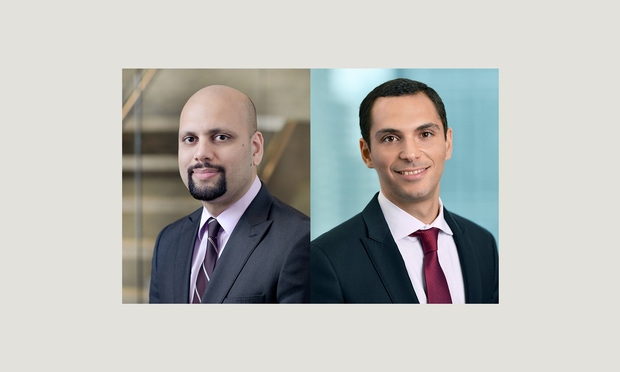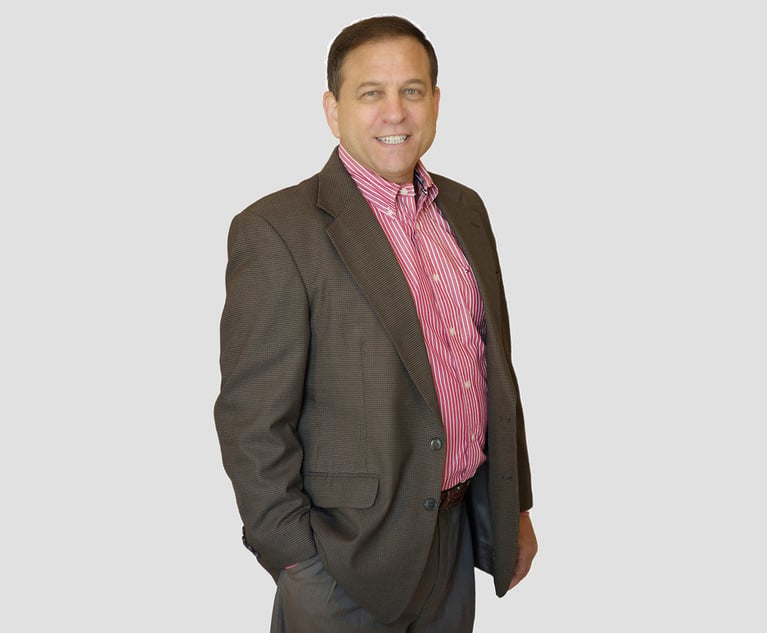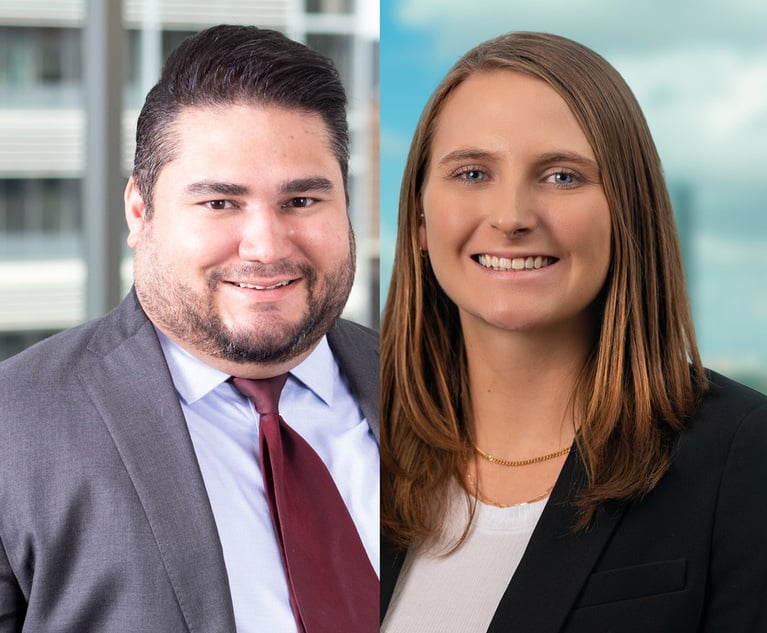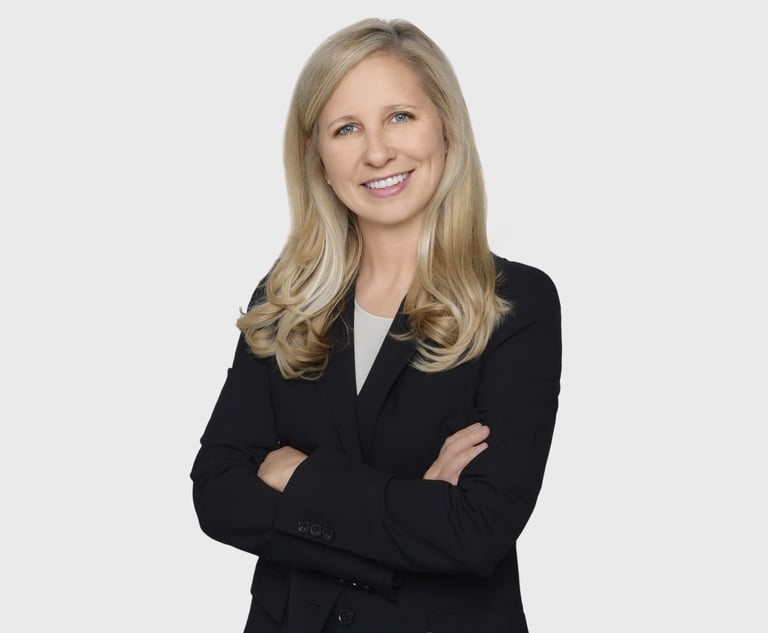Hearsay: An Expanded Residual Exception or More of the Same?
The Federal Rules of Evidence were recently amended to change the criteria under the residual exception. In this article, we describe the new requirements of the residual exception and explore its potential relevance.
February 19, 2020 at 09:20 AM
6 minute read
 Syed S. Ahmad, partner, Hunton Andrews Kurth, Washington, and Yaniel Abreu , associate, Hunton Andrews Kurth, Miami
Syed S. Ahmad, partner, Hunton Andrews Kurth, Washington, and Yaniel Abreu , associate, Hunton Andrews Kurth, Miami
The general inadmissibility of hearsay is something that has been around for some time, just like various exceptions that allow hearsay to be admitted in certain situations. The residual exception is an example of those nuances and serves as a "catch-all" exception by allowing hearsay to be admitted if the statement is considered trustworthy, among other requirements. The Federal Rules of Evidence were recently amended to change the criteria under the residual exception. In this article, we describe the new requirements of the residual exception and explore its potential relevance.
The Federal Rules of Evidence provide that an out-of-court statement offered for the truth of the matter asserted is hearsay, and hearsay is generally inadmissible. However, there are many exceptions allowing hearsay to be admitted under certain specified circumstances. There are exceptions for excited utterances, present sense impressions, statements under the belief of imminent death and many more. But, even if the specified exceptions do not apply, hearsay may be admissible if it meets the requirements of the "catch-all" residual exception.
Attorneys typically rely on the residual exception as a matter of last resort when hearsay evidence does not satisfy the requirements of any of the categorical exceptions. The new version of the residual exception, which became effective Dec. 1, 2019, is significantly different from its predecessor.
Under the old residual exception, hearsay was admissible if four requirements were satisfied. First, the statement needed to have "equivalent circumstantial guarantees of trustworthiness" to a statement admitted under one of the categorical exceptions. Second, the statement must have been offered as "evidence of a material fact." Third, the statement was more probative on the point for which it was offered than any other evidence that the proponent could obtain through reasonable efforts. Finally, admitting the statement served the purposes of the rules of evidence and justice.
The exception, as amended, does away with some of those factors. Under the new residual exception, there are two requirements. First, hearsay is admissible if it is supported by "sufficient guarantees of trustworthiness—after considering the totality of circumstances under which it was made and evidence, if any, corroborating the statement." Second, the statement "is more probative … than any other evidence that the proponent can obtain through reasonable efforts."
Importantly, under the new rule, in determining whether a hearsay statement is sufficiently trustworthy, courts must consider the "totality of circumstances" under which the hearsay statement was made. The commentary surrounding the change suggests that the new totality of the circumstances standard is broader and will, therefore, capture more hearsay statements than the old version of the exception. Indeed, under the old residual exception, the proponent of the hearsay statement had to show that the statement had "equivalent" guarantees of trustworthiness as statements admitted into evidence under one of the categorical exceptions.
The shift away from the "equivalence" standard to the totality of the circumstances standard is expected to create more consistency and predictability for litigants. The committee notes for the 2019 amendment describe the difficulty courts have had applying the "equivalence" standard because they are free to choose among a spectrum of exceptions for comparison, all of which have different types of guarantees of reliability that differ in strength. Beyond that, the committee explained that some statements offered under the residual hearsay exception cannot be compared usefully to any of the categorical exceptions but might well be trustworthy. The amendments to the exception are intended to address these issues.
The new version of the residual exception will allow courts to analyze the reliability of a hearsay statement without the need to rely on any other exception to determine whether the statement is trustworthy enough for admission under the residual exception. It eliminates the requirement of an equivalence analysis by the court. In other words, courts will no longer have to analyze whether the hearsay statement is, for example, sufficiently trustworthy for admissibility under the excited utterance exception to conclude that the statement is admissible under the residual exception.
Under the new version of the exception, courts should proceed directly to determine whether the hearsay statement is sufficiently trustworthy based on the totality of the circumstances. The new version of the exception also clarifies that, in evaluating the trustworthiness of a hearsay statement, courts should consider any other evidence that corroborates the reliability of the statement. To be clear, however, in assessing the trustworthiness of the hearsay statement, courts must consider not only the existence of corroborative evidence, but also the strength and quality of that evidence. Accordingly, even though the amended residual exception instructs the courts to consider evidence corroborating the reliability of a hearsay statement, if courts determine that the corroborative evidence is of low credibility, they must account for that when weighing whether the statement is sufficiently trustworthy for admissibility.
In sum, the amended residual exception will likely benefit litigants and courts. Aside from creating more predictability, parties in litigation will have the ability to introduce evidence that may not have been otherwise admissible under the old version of the exception. Courts, on the other hand, now have a framework that should allow them to rule on the admissibility of evidence with increasing uniformity. Though the full extent of the amendment's ramifications cannot be fully anticipated, the development of case law interpreting the new residual exception is something worth tracking for any litigator, as it can affect the scope of the evidence that litigants can introduce to prove their cases.
Syed S. Ahmad is a partner and part of Hunton Andrews Kurth's insurance team in Washington. Yaniel Abreu is an associate in the firm's Miami office and advises companies in complex insurance coverage matters.
This content has been archived. It is available through our partners, LexisNexis® and Bloomberg Law.
To view this content, please continue to their sites.
Not a Lexis Subscriber?
Subscribe Now
Not a Bloomberg Law Subscriber?
Subscribe Now
NOT FOR REPRINT
© 2025 ALM Global, LLC, All Rights Reserved. Request academic re-use from www.copyright.com. All other uses, submit a request to [email protected]. For more information visit Asset & Logo Licensing.
You Might Like
View All
Don’t Forget the Owner’s Manual: A Guide to Proving Liability Through Manufacturers’ Warnings and Instructions
5 minute read


Leveraging the Power of Local Chambers of Commerce: A Second-Career Lawyer’s Guide to Building a Thriving Practice
5 minute readLaw Firms Mentioned
Trending Stories
- 1'Didn't Notice Patient Wasn't Breathing': $13.7M Verdict Against Anesthesiologists
- 2'Astronomical' Interest Rates: $1B Settlement to Resolve Allegations of 'Predatory' Lending Cancels $534M in Small-Business Debts
- 3Senator Plans to Reintroduce Bill to Split 9th Circuit
- 4Law Firms Converge to Defend HIPAA Regulation
- 5Judge Denies Retrial Bid by Ex-U.S. Sen. Menendez Over Evidentiary Error
Who Got The Work
J. Brugh Lower of Gibbons has entered an appearance for industrial equipment supplier Devco Corporation in a pending trademark infringement lawsuit. The suit, accusing the defendant of selling knock-off Graco products, was filed Dec. 18 in New Jersey District Court by Rivkin Radler on behalf of Graco Inc. and Graco Minnesota. The case, assigned to U.S. District Judge Zahid N. Quraishi, is 3:24-cv-11294, Graco Inc. et al v. Devco Corporation.
Who Got The Work
Rebecca Maller-Stein and Kent A. Yalowitz of Arnold & Porter Kaye Scholer have entered their appearances for Hanaco Venture Capital and its executives, Lior Prosor and David Frankel, in a pending securities lawsuit. The action, filed on Dec. 24 in New York Southern District Court by Zell, Aron & Co. on behalf of Goldeneye Advisors, accuses the defendants of negligently and fraudulently managing the plaintiff's $1 million investment. The case, assigned to U.S. District Judge Vernon S. Broderick, is 1:24-cv-09918, Goldeneye Advisors, LLC v. Hanaco Venture Capital, Ltd. et al.
Who Got The Work
Attorneys from A&O Shearman has stepped in as defense counsel for Toronto-Dominion Bank and other defendants in a pending securities class action. The suit, filed Dec. 11 in New York Southern District Court by Bleichmar Fonti & Auld, accuses the defendants of concealing the bank's 'pervasive' deficiencies in regards to its compliance with the Bank Secrecy Act and the quality of its anti-money laundering controls. The case, assigned to U.S. District Judge Arun Subramanian, is 1:24-cv-09445, Gonzalez v. The Toronto-Dominion Bank et al.
Who Got The Work
Crown Castle International, a Pennsylvania company providing shared communications infrastructure, has turned to Luke D. Wolf of Gordon Rees Scully Mansukhani to fend off a pending breach-of-contract lawsuit. The court action, filed Nov. 25 in Michigan Eastern District Court by Hooper Hathaway PC on behalf of The Town Residences LLC, accuses Crown Castle of failing to transfer approximately $30,000 in utility payments from T-Mobile in breach of a roof-top lease and assignment agreement. The case, assigned to U.S. District Judge Susan K. Declercq, is 2:24-cv-13131, The Town Residences LLC v. T-Mobile US, Inc. et al.
Who Got The Work
Wilfred P. Coronato and Daniel M. Schwartz of McCarter & English have stepped in as defense counsel to Electrolux Home Products Inc. in a pending product liability lawsuit. The court action, filed Nov. 26 in New York Eastern District Court by Poulos Lopiccolo PC and Nagel Rice LLP on behalf of David Stern, alleges that the defendant's refrigerators’ drawers and shelving repeatedly break and fall apart within months after purchase. The case, assigned to U.S. District Judge Joan M. Azrack, is 2:24-cv-08204, Stern v. Electrolux Home Products, Inc.
Featured Firms
Law Offices of Gary Martin Hays & Associates, P.C.
(470) 294-1674
Law Offices of Mark E. Salomone
(857) 444-6468
Smith & Hassler
(713) 739-1250






